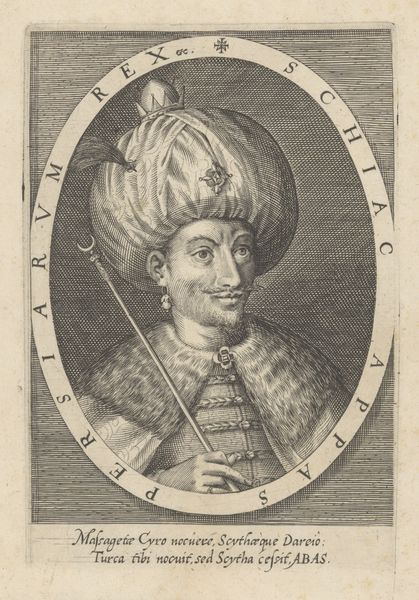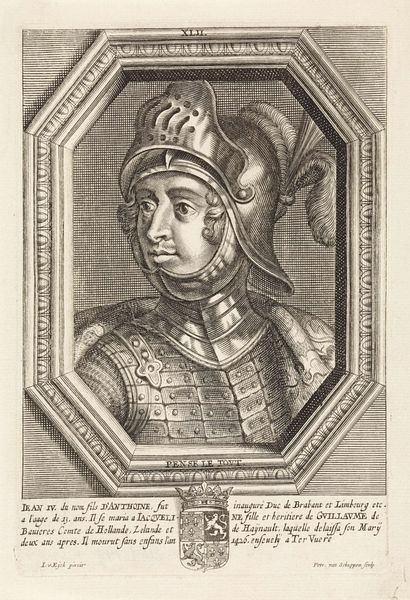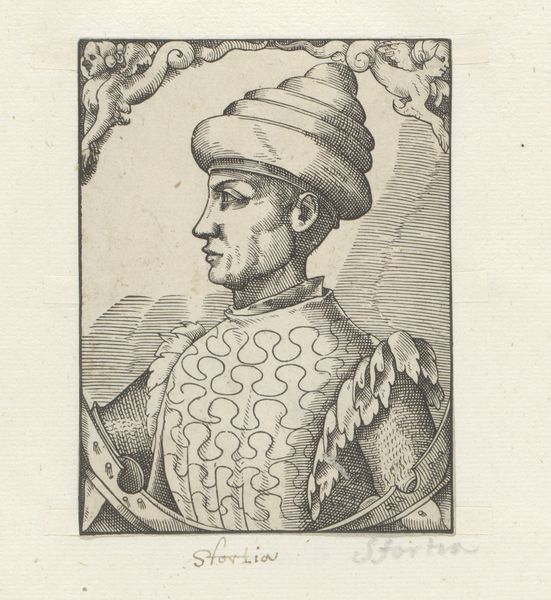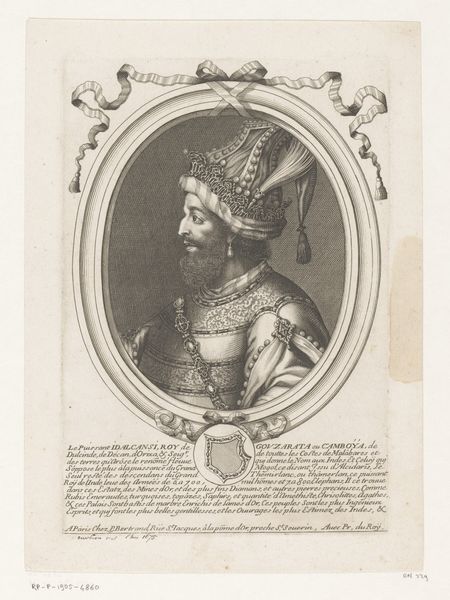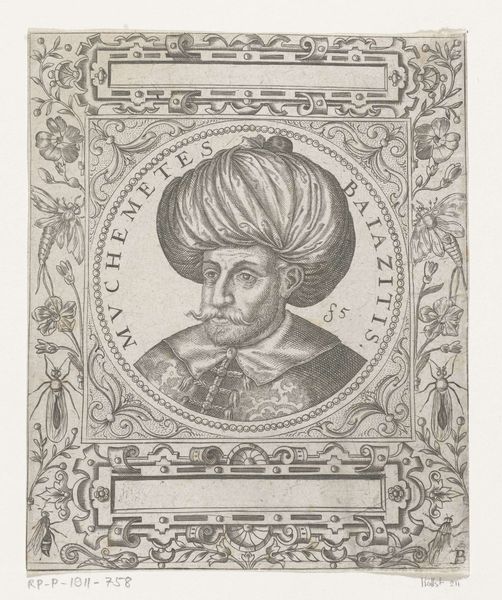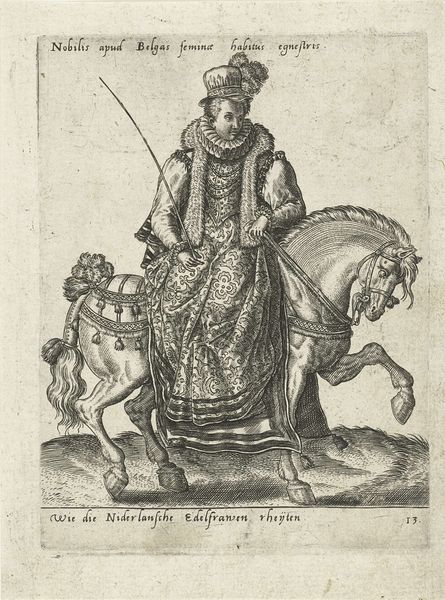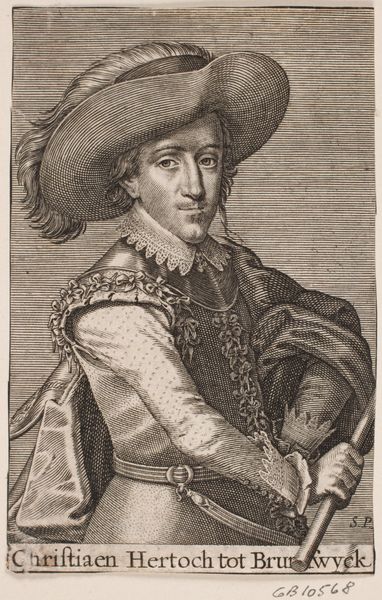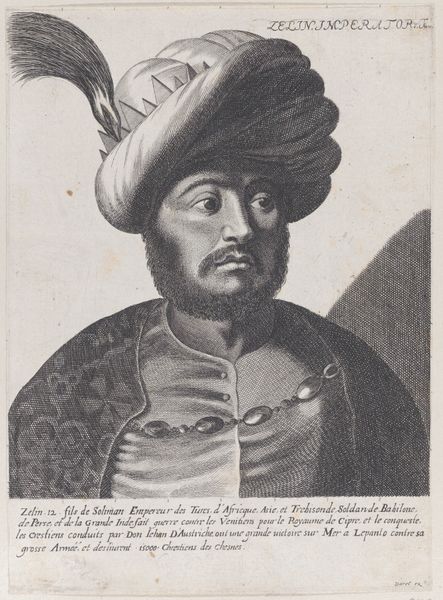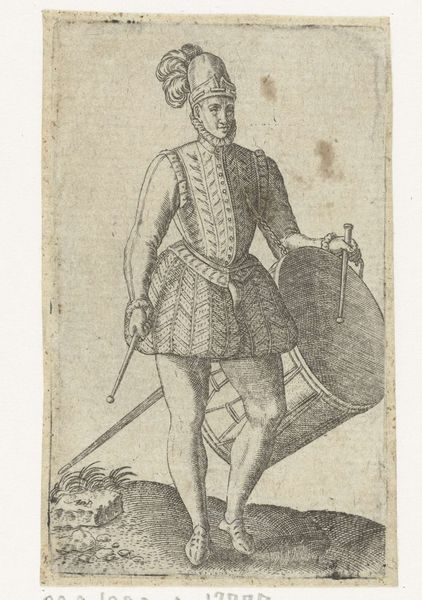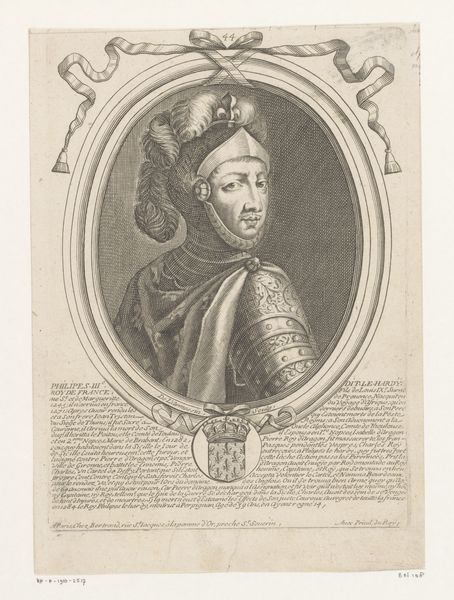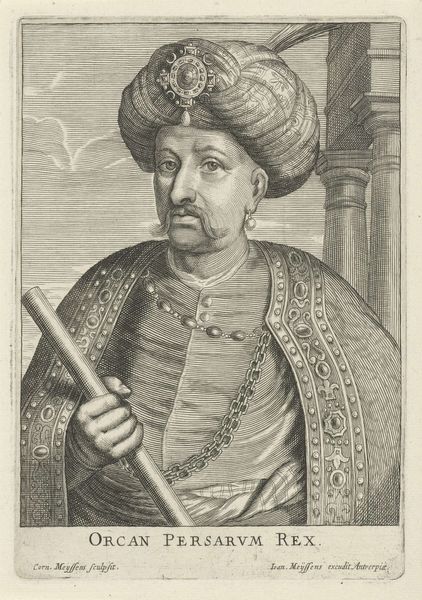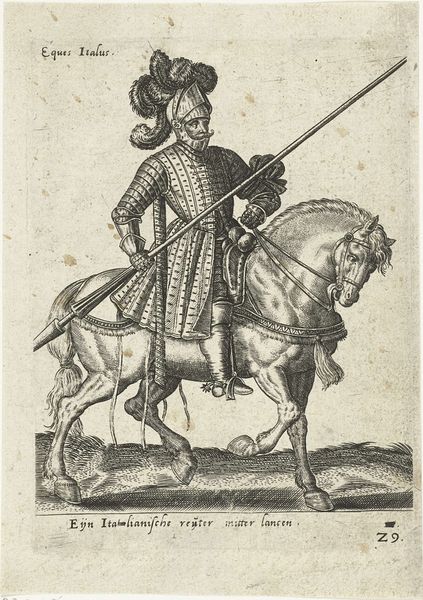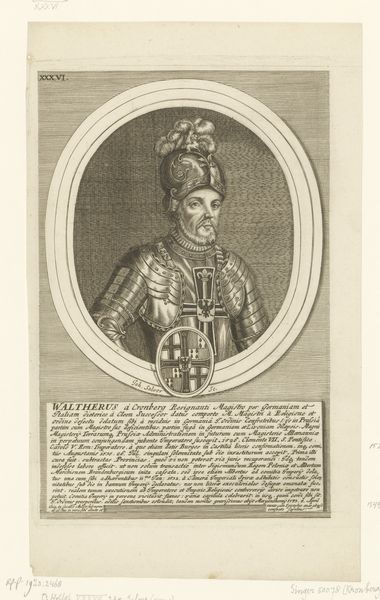
engraving
#
portrait
#
figuration
#
portrait drawing
#
islamic-art
#
genre-painting
#
history-painting
#
engraving
Dimensions: height 197 mm, width 135 mm
Copyright: Rijks Museum: Open Domain
Curator: Here we have an engraving titled "Portret van Abbas I, sjah van Perzië," or "Portrait of Abbas I, Shah of Persia," dating back to the 17th century. Look at the incredible detail captured here. Editor: My first impression is the weight of representation. The figure seems almost… boxed in by symbols of power. All those tiny soldiers and horses! It feels like looking at a stage set more than a person. Curator: It's fascinating how these historical portraits functioned, isn't it? Think about the purpose: this wasn't just about likeness. The image presents an ideal—Shah Abbas I, ruler, commander, embodiment of Persia. It makes me wonder what the context surrounding Islamic art had to do with figuration as representation in a specific context and era. Editor: Right, it's pure messaging, playing on archetypes of rulership across cultures. Fur-lined cloak, elaborate turban, the little scepter topped with what looks like a decorative grenade. Each element signifies status, yes, but also participation in a certain performance of power, not all that dissimilar to what royals did elsewhere. Curator: Indeed. That fur-lined cloak! Imagine the wearer in life. Consider that backdrop. Look closely! It is a procession with spear carriers on foot and on horseback. Now notice, set behind him, a coat of arms or family crest of sorts. It shows how carefully this image was assembled to project strength and lineage. It speaks volumes about empire-building as both cultural and economic endeavor. The very posture, and expression are measured and formal. The upturned open hand shows not only rank and rule but power over a great people. It almost dares one to touch it! Editor: And let's think about the role of visual art in a period, particularly for Islamic rulers whose representations faced particular controversies. Consider questions like: Did images promote recognition and solidify their control over populations both literate and illiterate? The circulation of this engraving undoubtedly shaped perceptions across vast territories, making Abbas into an icon before "image" took its modern meaning. It begs the question of control and reach over peoples who were, themselves, artists who might create radically different narratives if they could. Curator: It all blends in, and you know, seeing art, and art history is one thing, understanding a moment and how to connect its meaning with the contemporary moment is yet something else. Art isn't some stuffy thing, from a specific era that you learn about or see or consider for the sake of it. In it, are all kinds of lessons, clues to what to look out for, to not take for granted. I find that the greatest beauty of these older works, such as this, and what makes studying and appreciating them is that so much, if not all, can still be relevant, now! Editor: Yes, these glimpses into the past are never truly gone as history reverberates and echoes across centuries to our current condition. We're left to ponder these complexities and learn as much as possible as humans who appreciate and benefit from it!
Comments
No comments
Be the first to comment and join the conversation on the ultimate creative platform.
